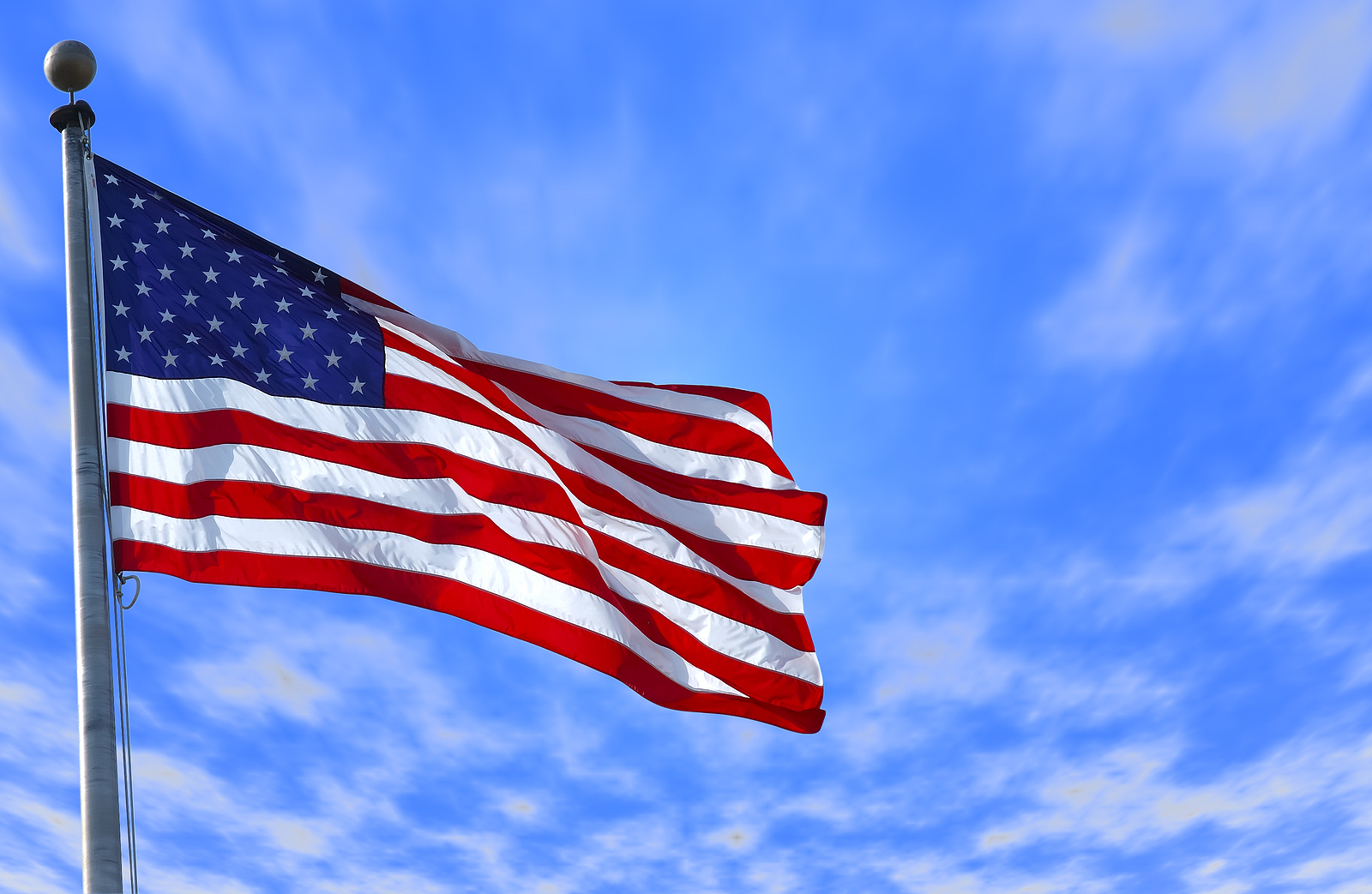Many communities celebrate holidays and other events by displaying the American flag. Federal law governs how the flag must be displayed, maintained and, when worn and tattered, destroyed. What many consider flag etiquette is actually the law.
The section of federal law covering the American flag is referred to as the “Flag Code.” Below are answers to common questions concerning how the flag should be displayed, maintained and destroyed:
- The flag should be flown in fair weather, unless designed for inclement weather.
- The flag should be lit at all times, either by sunlight or by an appropriate light.
- When the flag is lowered, no part of it should touch the ground or any other object; it should be received by waiting hands and arms. To store the flag it should be folded neatly and ceremoniously.
- The flag should never be dipped to any person or thing. It is flown upside down only as a distress signal.
- The flag should not be used for any decoration. Use bunting of blue, white and red stripes for these purposes, not a flag. The blue stripe of a bunting should be on the top.
- The flag should never be defaced or used for any advertising purpose. This prohibition includes embroidering, printing or otherwise used on furniture, clothing, scarves, handkerchiefs, napkins or boxes. The flag should never have any mark, insignia, letter, word, number, figure or drawing of any kind placed on it or attached to it.
- The flag should not be used as part of a costume or athletic uniform, except that a flag patch may be used on the uniform of military personnel, firefighters, police officers and members of patriotic organizations.
- When the flag is to be flown at half-staff, the flag should be hoisted to the peak for an instant, then lowered to the half-staff position. The flag should be again raised to the peak before it is lowered for the day. Half-staff means lowering the flag to one-half the distance between the top and bottom of the staff. Crepe streamers may be affixed to spear heads or flagstaffs in a parade only by order of the President of the U.S.
Displaying the Flag Outdoors
- Over the Middle of the Street: It should be suspended vertically with the union, or the blue field of white stars, to the north in an east and west street or to the east in a north and south street.
- Suspended Over a Sidewalk: The flag may be suspended from a rope extending from a house to a pole at the edge of the sidewalk; the flag should be hoisted out, union first, from the building.
- From a Pole Angling Horizontally or at an Angle: The flag may be projected from the window sill, balcony or front of a building with the union of the flag placed at the peak of the pole, unless the flag is at half-staff.
- In a Parade with Other Flags: The flag, when carried in a procession with another flag or flags, should be either on the marching right; that is, the flag’s own right, or, if there is a line of other flags, in front and in the center of that line.
- Flown on the Same Halyard with Non-Nation Flags: The American flag should always be at the peak. When the flags are flown from adjacent staffs, the flag of the U.S. should be hoisted first and lowered last. No such flag or pennant may be placed above the flag of the U.S. or to the right of the flag of the U.S.
- With Other National Flags: When flags of two or more nations are displayed, they should be approximately the same size and flown from separate staffs of the same height.
- With Non-National Flags: The U.S. flag should be at the center and at the highest point of the group when a number of flags of states or localities or pennants of societies are grouped and displayed from staffs.
- No advertising signs should be attached to the staff or halyard.
Displaying the Flag Indoors
- From a Staff on a Podium in an Auditorium: The U.S. flag should hold a position of superior prominence, in advance of the audience, and in the position of honor at the speaker’s right as he faces the audience. Any other flag so displayed should be placed on the left of the speaker (to the right of the audience).
- From a Staff in an Auditorium but not on the Podium: Custom (not the flag code) dictates that the U.S. flag be in a position of superior prominence at the audience’s right.
- If the Flag is not Being Flown From a Staff: The flag should be displayed flat whether indoors or out.
- When Used to Cover a Casket: The flag should be situated so the union is at the head and over the left shoulder. The flag should be removed from the casket before it is lowered into the grave without being allowed to touch the ground.
Maintenance and Disposal
- The flag should be cleaned and mended when necessary or removed until repairs can be made.
- When a flag is so worn it is no longer fit to serve as a symbol of our country, it should be destroyed by burning in a dignified manner.
- Section 8k of the Flag Code states, “The flag, when it is in such condition that it is no longer a fitting emblem for display, should be destroyed in a dignified way, preferably by burning.” We recommend that you contact your local Veterans of Foreign Wars chapter for help properly disposing of your flag. Your local American Legion, Knights of Columbus or some Boy Scout and Girl Scout troops may also provide this service.
- In earlier times most American flags were made of cotton or wool, today’s flags are often nylon or other petroleum-based materials. Burning them can release hazardous gases into the air. In some states it is illegal to burn nylon, so adhering to the Flag Code puts you in direct violation of the law. Burning is preferred for cotton and wool flags. Nylon and flags made from other synthetics can be buried.
- Modern flag retirement ceremonies, often held annually on Flag Day, sometimes feature the symbolic burning of a single flag (cotton or wool) and the burial of the others. This is both safe and respectful.
Flags at Half Staff
Official Presidential proclamations may be found at https://www.whitehouse.gov/briefing-room/. The American Legion (www.legion.org/flag) offers an email alert subscription, along with a wealth of flag etiquette and resources.
Not all alert services will catch the Governor’s proclamations, but a reliable site may be found here: http://us.halfstaff.org/.






